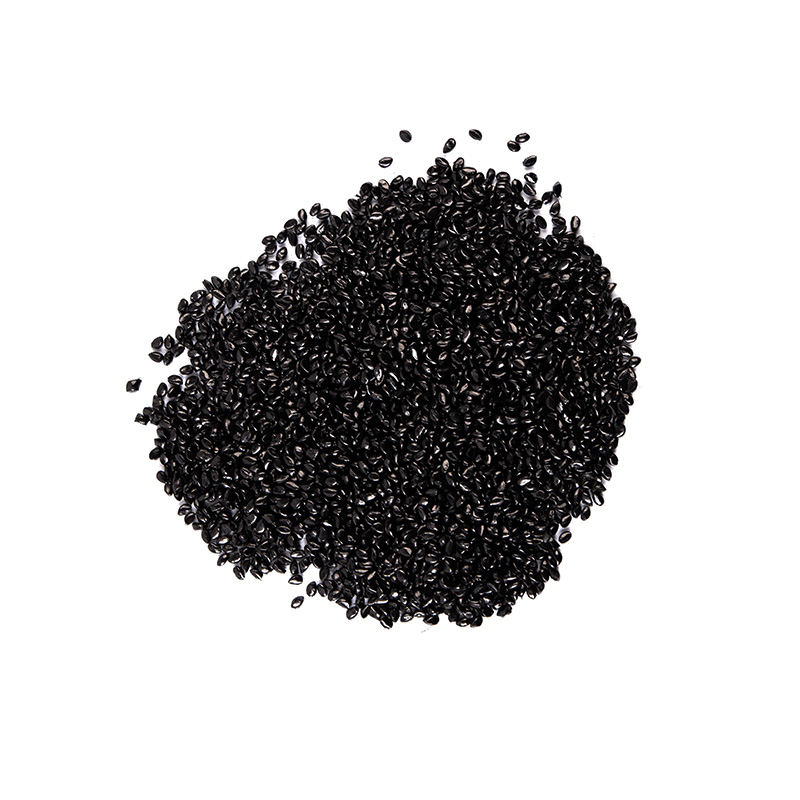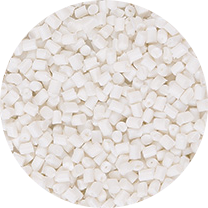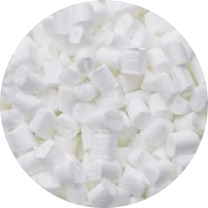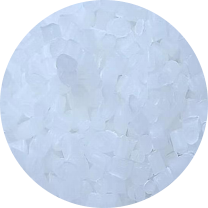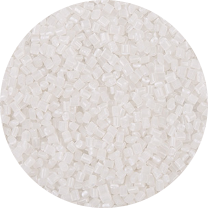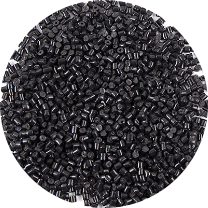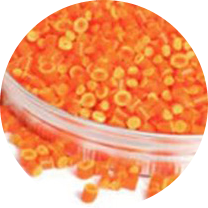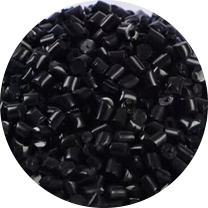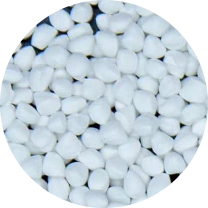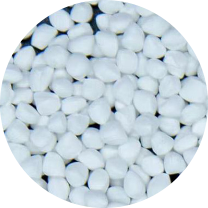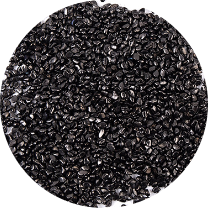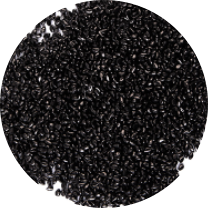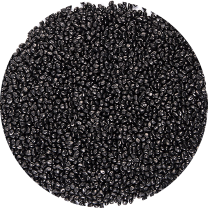How to Solve Surface Gloss Unevenness in Injection White Masterbatch Products
- 1 Understanding the Root Causes of Gloss Inconsistency
- 2 Systematic Solutions: From Raw Materials to Processing
- 3 Prevention Over Cure: Establishing Quality Control Systems
- 4 FAQ
- 4.1 What concentration of Injection White Masterbatch typically delivers the best results?
- 4.2 Why do streaks persist even after adjusting temperature parameters?
- 4.3 How can I evaluate dispersion quality before full production runs?
- 4.4 Can increasing masterbatch percentage improve surface gloss?
- 4.5 What's the relationship between mold temperature and gloss performance?
Achieving a perfect, consistent surface finish is crucial for plastic products, yet Injection White Masterbatch often presents challenges with gloss uniformity. Issues like dull patches, shiny streaks, or cloudy appearances can compromise product quality and aesthetics. This comprehensive guide explores the technical causes and provides actionable solutions to eliminate gloss unevenness, ensuring your manufactured parts meet the highest standards of excellence and visual appeal.
Agricultural Film Mulch Black Masterbatch Blackness Granule Pellets
Understanding the Root Causes of Gloss Inconsistency
Before implementing solutions, accurate diagnosis of the underlying problem is essential. Gloss variation rarely stems from a single source but typically results from complex interactions between material properties, machine settings, and mold conditions. A systematic approach to identifying these factors is fundamental to achieving lasting results.
Material and Formulation Factors
The foundation of excellent surface finish lies in the quality and compatibility of your raw materials. Inconsistent material properties frequently lead to common injection white masterbatch dispersion problems that manifest as visual defects.
- Poor Pigment Dispersion: Inadequately dispersed titanium dioxide particles within the masterbatch can form agglomerates that scatter light irregularly, creating visible specks or matte regions on otherwise glossy surfaces.
- Carrier-Base Resin Incompatibility: Mismatched polymer systems between the masterbatch carrier and base resin prevent homogeneous blending, leading to phase separation evident as streaking or haze.
- Moisture Contamination: Hygroscopic resins and masterbatches absorb atmospheric moisture that vaporizes during processing, creating splay marks or silver streaks that disrupt surface gloss.
Processing Parameter Factors
Even with optimal materials, improper machine configuration can undermine surface quality. Temperature management is particularly critical when establishing the correct injection molding temperature for white masterbatch applications.
- Insufficient Melt Temperature: Inadequate heating prevents complete pigment dispersion and polymer flow, reducing the material's ability to replicate the mold's polished surface texture accurately.
- Improper Injection Velocity: Excessively slow injection allows premature material cooling and skin formation, while excessive speed generates shear-induced defects - both scenarios creating visible flow lines.
- Suboptimal Mold Temperature: Cool mold surfaces cause rapid freezing of the material contact layer, preventing adequate surface replication and resulting in low-gloss areas.
Systematic Solutions: From Raw Materials to Processing
Resolving gloss inconsistency demands an integrated approach addressing all aspects of the production process. Isolated adjustments typically yield temporary improvements, whereas comprehensive optimization delivers sustainable results.
Optimizing Your Injection White Masterbatch Selection and Formula
Begin with material fundamentals. Selecting appropriate masterbatch characteristics and establishing optimal formulation parameters directly influences strategies for how to improve whiteness in plastic injection molding while maintaining gloss consistency.
- Conduct Let-Down Ratio Analysis: Establish the best injection white masterbatch concentration through systematic testing, balancing opacity requirements with processability, as both insufficient and excessive loading cause gloss problems.
- Implement Pre-Processing Drying Protocols: Follow manufacturer recommendations for drying both base resin and masterbatch, typically at 70-80°C for 2-4 hours, to eliminate moisture-related surface defects.
- Verify Material Compatibility: Test masterbatch-base resin combinations for melt flow index matching and chemical compatibility to ensure homogeneous blending during processing.
Precise Adjustment of Injection Molding Parameters
Fine-tuning processing parameters can compensate for material variations and maximize the performance potential of your Injection White Masterbatch. The table below outlines strategic adjustments for common gloss-related issues:
| Processing Parameter | Adjustment for Low/Uneven Gloss | Adjustment for Flow Lines |
| Melt Temperature | Increase gradually in 5-10°C increments to improve flow characteristics | Moderate increase to reduce viscosity and promote blending |
| Mold Temperature | Increase significantly (20-40°C above standard) to enhance surface replication | Increase to prevent premature freezing at flow fronts |
| Injection Speed | Implement velocity profiling: slow start followed by rapid filling | Increase to fill cavity before material skin forms |
| Holding Pressure/Time | Increase to compensate for shrinkage and maintain cavity contact | Optimize to eliminate vacuum voids without overpacking |
The Critical Role of Mold Design and Maintenance
The mold surface serves as the template for part appearance, making its condition paramount to achieving consistent gloss. Many documented causes of streaks in white plastic parts originate from mold-related issues.
- Surface Polish Quality: Ensure cavity surfaces maintain mirror-finish polishing standards, as microscopic scratches, erosion, or contamination will reproduce faithfully on every cycle.
- Venting System Efficiency: Inadequate venting traps compressed air and gases that prevent complete cavity surface contact, creating dull patches particularly in last-to-fill areas.
- Gate Design Optimization: Proper gate dimensioning and placement ensure balanced filling without excessive shear heating, which can degrade polymers and create visual defects.
Prevention Over Cure: Establishing Quality Control Systems
Proactive quality management proves consistently more cost-effective than reactive problem-solving. Implementing robust monitoring systems prevents gloss inconsistency before production begins.
Incoming Material Inspection Standards
Establish rigorous incoming quality control protocols to validate material consistency before they enter production processes.
- Perform melt flow rate testing on base polymer batches to verify processing consistency and detect material variations.
- Utilize spectrophotometric analysis to measure whiteness index (L* value) and color strength across different Injection White Masterbatch production lots.
- Maintain reference standards and conduct comparative plaque tests for each new material shipment to evaluate dispersion quality and surface appearance.
Key Points for In-Process Monitoring
Continuous monitoring during manufacturing operations detects process drift before it generates non-conforming products.
- Implement regular calibration schedules for all temperature, pressure, and timing sensors on injection molding equipment.
- Establish statistical process control charts tracking critical parameters including cycle time, cushion consistency, and peak pressure.
- Train operational staff to perform structured visual inspections using standardized lighting conditions and assessment criteria.
FAQ
What concentration of Injection White Masterbatch typically delivers the best results?
Determining the best injection white masterbatch concentration depends on multiple factors including desired opacity, base resin color, and part thickness. Generally, concentrations between 1-4% work well for natural polymers, while higher percentages (up to 6%) may be necessary for thin-walled applications requiring maximum opacity or when covering colored/recycled materials. The optimal approach involves starting with supplier recommendations then conducting methodical let-down ratio studies to identify the minimum concentration achieving your specifications while optimizing cost and performance.
Why do streaks persist even after adjusting temperature parameters?
When temperature optimization doesn't resolve streaking, the underlying causes of streaks in white plastic parts often relate to flow dynamics or mold condition. Investigate injection speed profiling - implementing a slow initial stage to establish a stable flow front followed by rapid filling often eliminates flow lines. Additionally, inspect molds for contamination, damage, or restricted gates that create excessive shear and material degradation. Sometimes, mechanical issues like worn check valves or barrel screws contribute to inconsistent melting and homogenization.
How can I evaluate dispersion quality before full production runs?
Proactive assessment of injection white masterbatch dispersion problems prevents costly production issues. The most effective method involves creating standardized test plaques using laboratory extrusion or injection equipment, then examining samples under controlled lighting conditions. Microscopic analysis at 50-100x magnification reveals pigment distribution quality, with well-dispersed masterbatches showing uniform particle distribution without agglomerates or streaking. This straightforward quality verification should become standard practice with each new material batch.
Can increasing masterbatch percentage improve surface gloss?
Contrary to intuition, increasing Injection White Masterbatch concentration often diminishes gloss rather than improving it. While higher loading enhances opacity, it can exacerbate dispersion challenges and alter polymer rheology, increasing melt viscosity and potentially causing flow issues that prevent proper mold surface replication. The objective remains identifying the optimal concentration that satisfies color requirements without compromising processing characteristics or final surface quality.
What's the relationship between mold temperature and gloss performance?
Mold temperature significantly influences the injection molding temperature for white masterbatch system's gloss performance. Higher mold temperatures (typically 60-90°C for most thermoplastics) keep the material in a molten state longer against the cavity surface, enabling superior replication of the polished mold finish. This approach often proves more effective for enhancing gloss than increasing melt temperature alone, as it specifically addresses the surface formation mechanism without risking thermal degradation.


 English
English 中文简体
中文简体 한국어
한국어 عربى
عربى